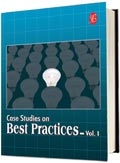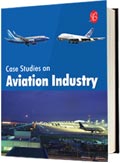Ambassador – Riches to Rags…..Is Competition the Culprit?
|
Code : ECC0057
|
Region : India |
||||
 OR |
|||||
|
Abstract: The case describes the transformation of market structure of Indian Automobile industry during the period from the first motor car ran on Indian roads i.e. from 1897 to 2016. Through the 1920s, passenger cars were only imported in small numbers. Completely knocked down (CKD) vehicles were assembled and supplied in India in early 1930’s. After independence and colonial rule in 1947, a plan for the indigenization of the Indian automobile started. This paved the way for the removal of manufacturers who were dealing with only imports as well as the ones with no Indian partner. The Industrial Policy Resolution of 1948 and the Industries Development and Regulation Act, 1951, included the licensing system. By fulfilling all the rules of the licensing system, the production of the Ambassador car began in 1957, enjoying monopoly power with over 70% market share in spite of the competition from Fiat till 1980’s. From the mid 80s onwards, with the more modern, cheaper and fuel efficient cars from Maruti Suzuki, the popularity of Ambassador and Padmini began to wane. With the economic liberalization in India and easing of licensing system during 1990’s, Automobile market opened up to new players. Ultimately, the Ambassador, the monopolist till 70’s that had a major market share till 90’s was forced to close down in 2014, while failing to compete with the new entrants. |
|
|
| For Case Books
Click Here >> For Case eBooks Click Here >> |
||
Pedagogical Objectives:
Keywords : Automobile market,Ambassador,Imperfect competitive markets ,Monopoly,Barriers to entry,Market power,Price maker,Economies of scale,Dead weight loss,Duopoly,Product differentiation,Oligopoly,Economic liberalization,Monopolistic competition,Perfect competition
Contents :
» PRE-INDEPENDENCE PERIOD (1890-1947)
» POST-INDEPENDENCE TO PRE-LIBERALIZATION PERIOD (1947 TO 1990)
» POST LIBERALIZATION – 1991 ONWARD
» AUTOMOBILE MARKET STRUCTURE – REIGN OF AMBASSADOR
» THE REIGN OF PREMIER PADMINI
» THE BIG BANG ENTRY OF MARUTI AND THE GROWTH OF THE MIDDLE CLASS SEGMENT
» LATER ENTRANTS WITH DIFFERENT STRATEGIES
» EXHIBITS
Related Case Studies
- » US Financial Crisis: The Effects on UK Banks
- » US Financial Crisis: US Banking Sector at Crossroads?
- » US Financial Crisis: Morgan Stanley as a Universal Bank
- » US Subprime Mortgage Market (A): Global Credit Crunch and Crisis at Northern Rock
- » US Subprime Mortgage Market (B): Global Credit Crunch and Crisis at Northern Rock
- View all Leadership case studies »
Recently Bought Case Studies



